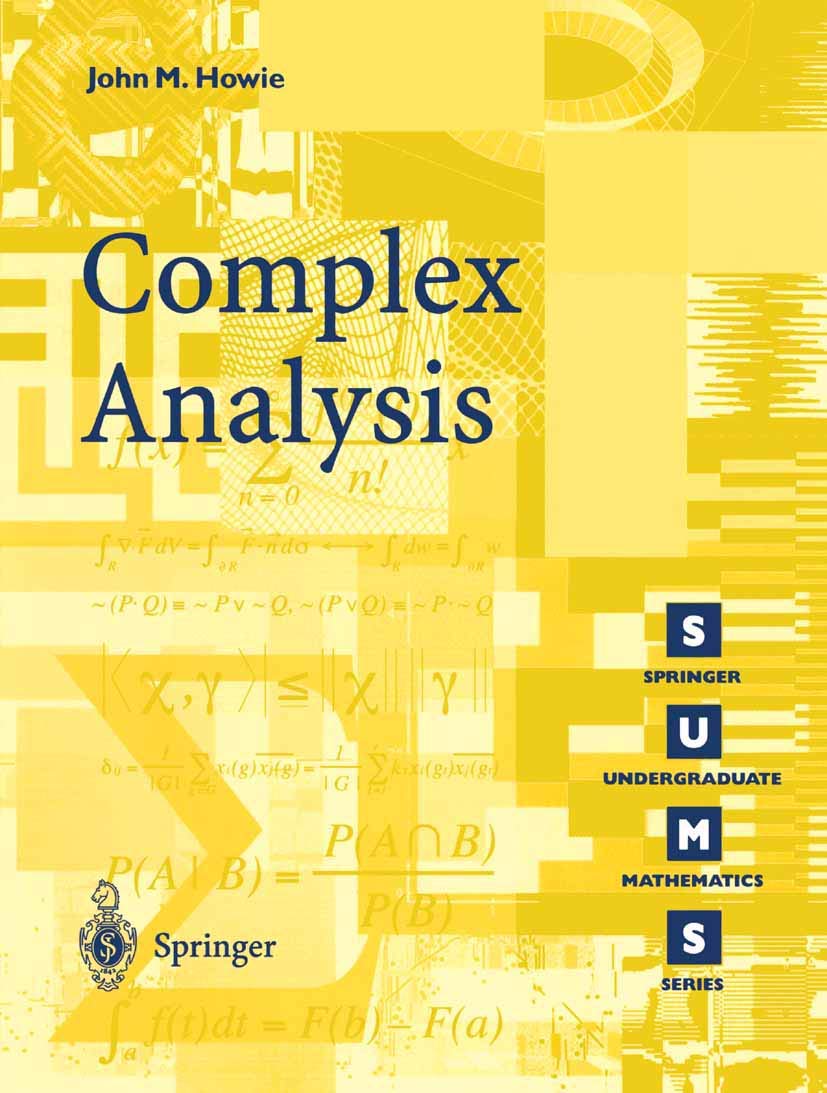

Complex Analysis (Springer Undergraduate Mathematics Series)
W**A
Good introduction complex analysis
This book is in the SUMS (Springer Undergraduate Mathematics Series)and so is a textbook aimed at a first course in complex analysis.I have several other volumes from the SUMS series, they have provedto be excellent works and this book is no exception. I have five otherbooks on complex analysis on my bookshelves for comparison.The beauty of this book is that it is aimed at a lower level thanother books on complex analysis that I have used. This makes it idealfor a first course in complex analysis. The amount of materialin it means it should suit a one semester course very well. Within eachchapter there were a number of sections each containing some descriptivematerial, theorems with proofs, some examples and each ended with a set ofexercises (Chapter 12 excepted). I thought the balance between theorems and proofs, examples,remarks and exercises was good. The examples illustrated the theorems well.The exercises were adequate in number and level of difficulty.In terms of structure it has a preface, a table of contents, twelvechapters of complex analysis, a final chapter which providessolutions to the exercises, a bibliography, and an index.A course on complex analysis is not usually enountered in a New ZealandUniversity's mathematics programme until the third year. At thispoint students should have had a fairly solid background inmathematics. Nevertheless, the author devotes the first two chaptersto reviewing material from these earlier courses which are essentialfor complex analysis. They cover topics from real analysis (Chapter 1)and some basics of complex numbers (Chapter 2). The material is necessarilybrief but any student coming into a course using this text from a summerbreak would do well to work through these two chapters if theinstructor chooses to omit them.The core of the book is in chapters 3 through 11. The treatmentis good and progresses from notions of functions and continuity (Ch 3),to differentiation (Ch 4), integration (Ch 5), Cauchy's theoremand its consequences (Ch 6 and 7), Laurent series and theResidue Theorem (Ch 8), and applications of contour integration (Ch 9).Chapter 10 is called ``Further Topics'' and has a few things such asintegrating f'/f, Rouche's Theorem, the Open Mapping Theorem andwinding numbers which don't fit easily elsewhere. Chapter 11is on conformal mappings.Chapter 12 covers only very briefly the Riemann Zeta function, theRiemann Hypothesis and complex iteration. The purpose of this lastchapter is to show the student that complex analysis is a livingsubject with active research taking place today. The coverage isbrief, less than 10 pages, but I think it is enough to acheive theauthor's intention.The final chapter is a set of answers to the problems. Theseare comprehensive but not set out for easy reading. I found thatwhen I consulted an answer the first thing I had to do was set out theauthor's answer in a much more structured way so that I could followhow the problem was solved. While one might think that is a disadvantage,the writing out itself was helpful in understanding the solution.The bibliography contains 16 items, most of these are books oncomplex analysis and includes such classics as two volumes byTitchmarsh and Whittaker and Watson. One is a web site and oneis not in English.The index is four pages long and quite comprehensive. I never had aproblem finding what I needed when I consulted it.The author is British and uses British spelling such as disc insteadof disk. The number of typographical errors was very small.I suspect many instructors would not like the comprehensive answer sectionat the back of the book but that feature would make it excellent for selfstudy. There are plenty of other books on complex analysis aroundso an instructor using this text could easily find suitable problemselsewhere to assign to students if they didn't want them to have accessto the answers before attempting a solution.It was hard to fault this book given its purpose. I am a bit reluctantto awards all five stars but am doing so in this case. If you are aninstructor looking for a textbook for a first course in complex analysis oryou are looking for book for self study then I think you would considerthis one.
C**A
Complex made simple
This is the only book on Complex Analysis that actually has answers to the problems. I am reading this as I did an OU course in this subject, but didn't fully understand it. I am on Chapter 2 at the moment, (Amazon keeps emailing to write a review, couldn't they wait a month or so until I have actually read it?) but so far everything is clearly explained. I am looking forward to actually understanding this subject.
L**.
very good
This book is very interesting, it is written is very clever way, with many examples, it is well organized and useful.
J**E
Five Stars
This is a good introduction to complex analysis with a good range of worked examples and questions.
H**R
perfekt
eine sehr schöne Übersicht der wichtigsten Sätze der komplexen Analysis, kann nur empfehlt werden.Die Beweise sind sauber geführt. Perfekt
D**I
Complex Analysis
Useful textbook by a clear author. I will use it in my lessons. It is suitable for self study also
T**N
Four Stars
good introduction to a difficult topic in mathematics
Trustpilot
1 month ago
1 week ago